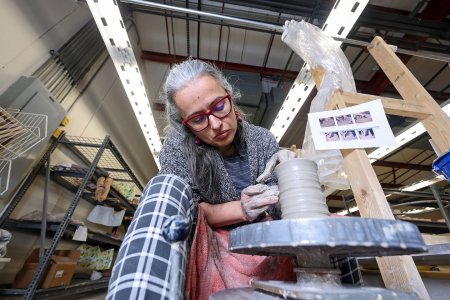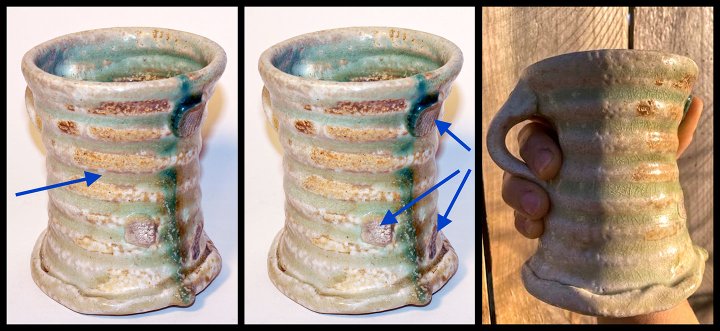Understanding Through the Sense of Touch
Enjoy this mini-class from fine arts faculty member and ceramics aritist Kristina Bogdanov.
by Kristina Bogdanov, Associate Professor of Fine Arts

As a college professor in 2023, I am not necessarily the most immediate source of knowledge for my students, as may have been the case 30 years ago. Now, we are all a fingertip away from all the knowledge contained within the virtual space on our mobile phones.
For better or for worse, our personal and professional experiences are heavily consumed by the virtual realms. It’s easy to find many benefits of this technology and virtual experience. However, during the pandemic, I became more aware than ever of the importance of human touch. Can the internet, as the all-powerful Oz, provide us with a true understanding of the sense of touch in the same way as a simple handmade art object?
My love for clay comes from seeing it as the most receptive art material. Clay, so primitive, raw, and dirty, is malleable enough to capture the finest detail of a human fingerprint. Clay is powerful enough to record the energy, character, and gesture of an artist by the simple act of touch. This natural quality of clay is something I reference constantly in my teaching.
What can we learn by observing, touching, and using a simple object such as a handmade mug?

In the left photo, I present one of my favorite mugs, by an unknown maker. The unique circular grooves on the surface are the first clue about how this object was made, indicating it was made on the wheel. This type of texture can be made only by human fingers running across the form while it turns on the potter’s wheel.
However, as you can see in the middle photo, it is not a symmetrical mug, as one would expect from wheel-thrown forms. The mug has indents that have captured the maker squeezing the form on the wheel. This petrified “hug,” in relation to a small handle and a small imprint of a seashell, communicate how the mug should be held. As shown in the right photo, you wrap your hand around the mug, rest your thumb on the seashell, while your index finger goes through the handle’s space, as through a ring (if you, like me, are not a fan of handles, this is a great design).
By holding the mug this way, you are shaking hands with the maker. Every morning as I drink my coffee and by holding the mug feel the grooves, I greet the maker who left these marks: “Hello, how are you? Hope your day goes well….”
Besides this subtle yet incredible way to communicate, this mug contains a few more interesting clues about its origins.
The seashell and the two small marks shown in the third photo were actually the standing points for the mug during the firing process. Basically, the mug was not standing in the kiln the way you see it and use it, but rather, it was on its side. That’s why there is a glaze drip on the bottom edge.
Also, this orientation allowed for the bottom of the mug to be completely glazed.
The color and texture of the glaze, as well as the use of a seashell, indicate that this mug was wood fired, which means it is a high-fire ware (fired at around 2,380F). The ash from the wood makes unique glazes, and every wood fire produces unique pieces; no two pieces ever come out the same.
The aspect of individuality is an innate part of art, which will always be a refreshing and lively counterpart to the increasingly systematic and programmed world we live in.
